The Arab World stretches from Egypt down as far as the Horn of Africa, with all the Gulf States included. It is a very varied group of cuisines.

In Arabic cuisine, lunch is considered the main meal of the day and is normally consumed after the Noon prayer. Dinner is the lightest meal in Arabic cuisine, although changing lifestyle requirements of regular people in the Arab World will often mean a heavier final meal if required. It must also be noted that the consumption of pork is not only a cultural taboo but also completely prohibited under Islamic Law.
If you are looking for delectable Arabic street snacks, then why not check out my post on the best street food in Egypt, which contains more finger food than described in this article below.
So without further ado, here is a selection of Arabic foods from the Persian Gulf which can eaten at any time of the day:
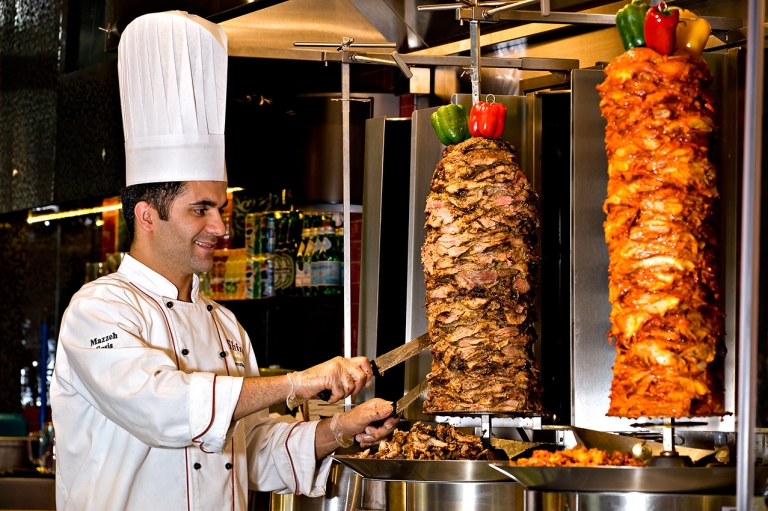
Shawarma (شاورما) has the same kind of concept to the Turkish favourite, the Donar Kebab. For Shawarma, an amalgam of meats, such as lamb, chicken or camel, are placed on a vertical spit and roasted for up to 24 hours. Shawarma is served by slicing off the desired meat and eaten in a wrap.
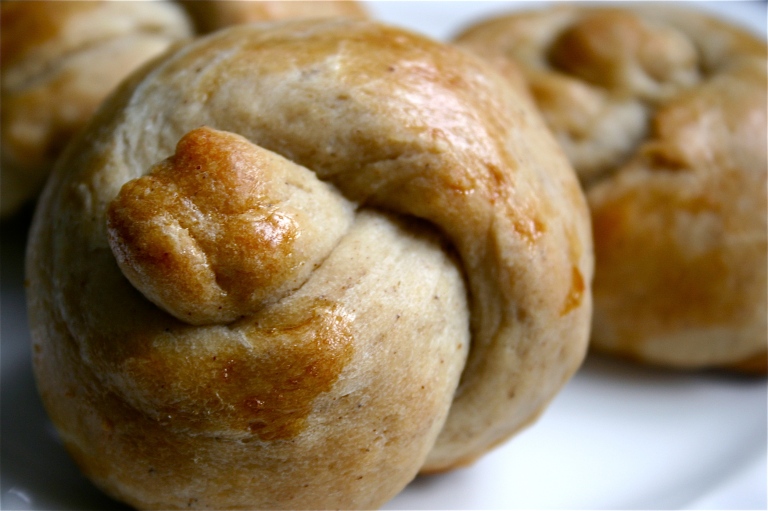
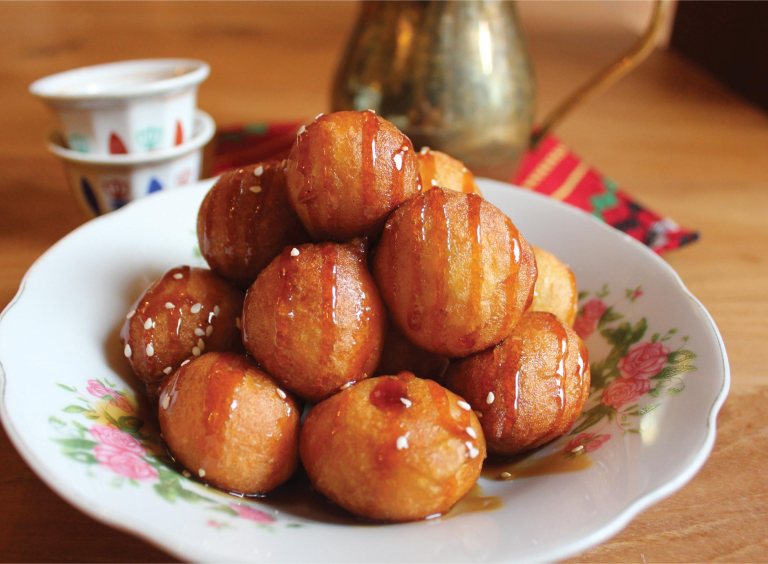
A Kleeja is a type of small cardamom cookie to be served in between meals as a light snack, and is extremely popular in Saudi Arabia. Luqaimat is a dish of deep-fried and sweet dumplings, covered in honey and syrup, which is usually eaten as a snack, but be eaten in larger quantities for dessert. Not too dissimilar to Gulab Jamun from the sub-continent.
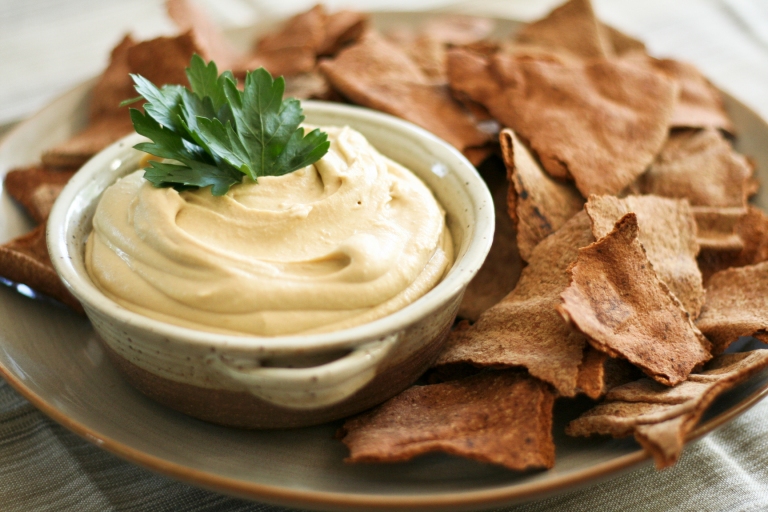
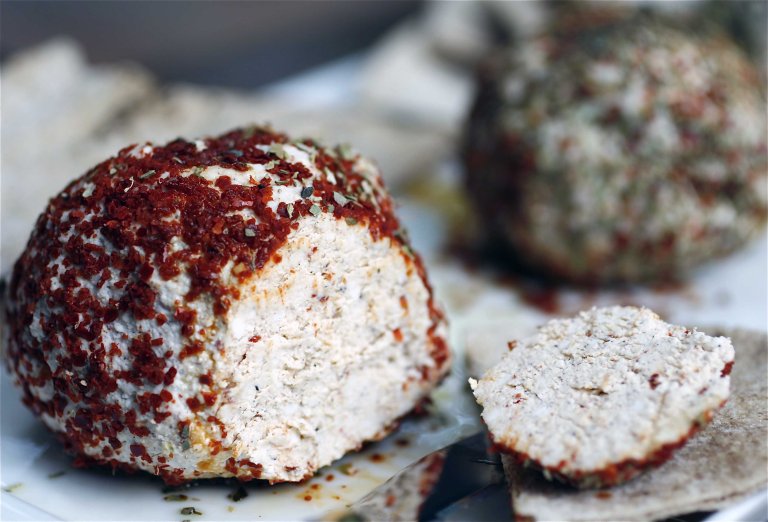
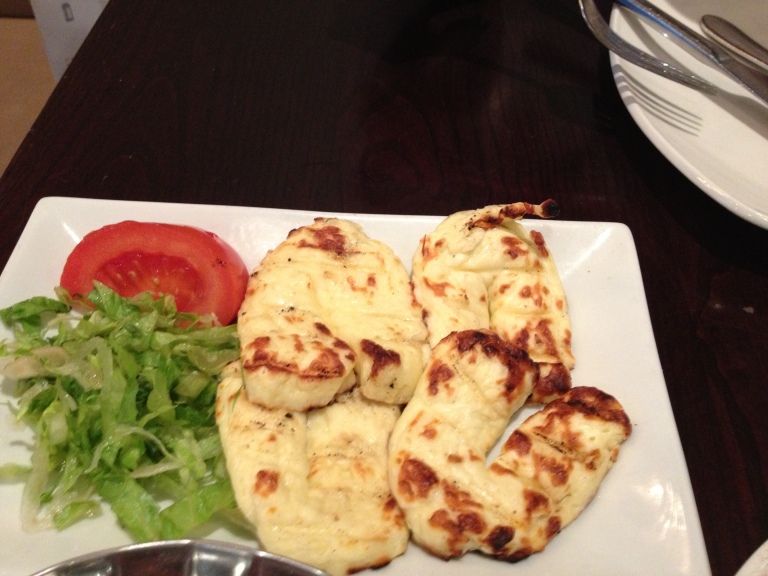
No meal time in the Middle-East would be complete with a side bowl of Hummus which can be used as a topping for anything from breads to pizzas, or even to accompany salads. Cheese is very important in Arabic cuisine, and Halloumi (حلوم) is a popular snack made from grilled cheese (possibly from camel milk), and the small bite-size cheese balls known as Shanklish (شنكليش) are eaten all over the region as a snack during the day.

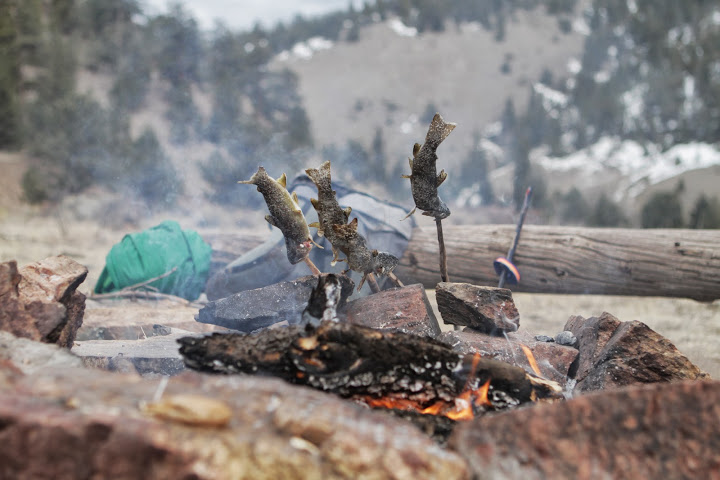
Kabsa (كبسة) is considered by many to be the national dish of Saudi Arabia but is eaten all over the Persian Gulf. Kabsa is a mixture of rice (usually basmati) and vegetables, and a meat of your choice (typically chicken) can be added. In some countries in the region, the dish is called Machboos. Fish dishes are extremely popular all over the Arabian Gulf, and one of these is Masgoof, a traditional Iraqi dish. Masgoof is an open cut fish grilled and spiced with salt, pepper and tamarind. While keeping the skin on, it is then brushed with olive oil. After marinating the fish, it is then placed on wooden sticks and then barbecued on a large flame. After the fish is well cooked and crispy, it is often sprinkled with the juice of a lemon, ready to be served.
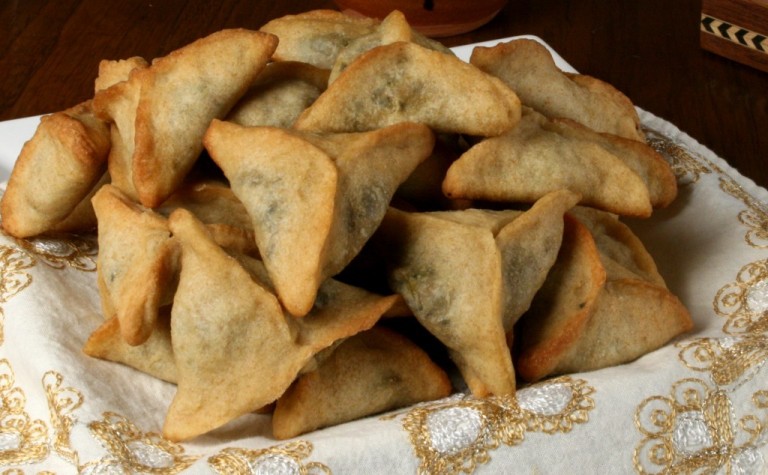
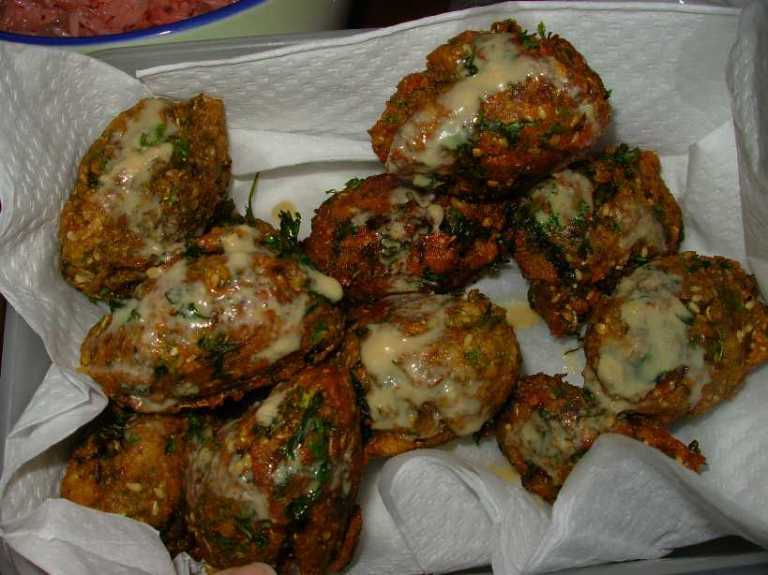

A Fatayer (فطير) is a pie stuffed with either meat or vegetables, and bear resemblance to the samosa from Indian cuisine. Occasionally feta cheese can be used as an additional or alternative stuffing. Fatayers are very popular in Arab cuisine and can be used as a vegetarian option. Falafel (فلافل) is another popular snack, being a deep-fried ball made of chick peas, and is usually served in pita bread. Al Jabab bread is used for consumption of very sweet things such as honey, treacle, and sugar. The dough is baked like a pancake.
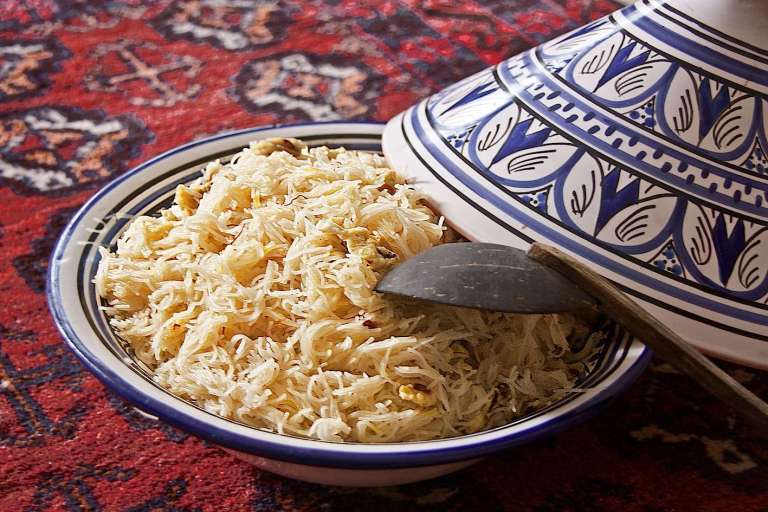

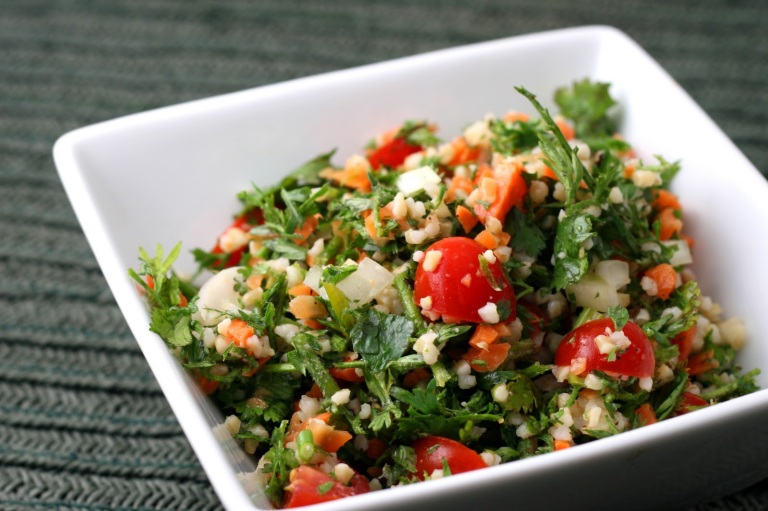
Balaleet is a light dish of vermicelli noodles and egg. Usually the dish is served mixed, but occasionally an omelette can be served instead atop the noodles. Manakeesh (مناقيش) is the Arabic version of a pizza; a flatbread that is similar to a Lahmacun that is found in Turkish cuisine, and is served with various toppings, but especially vegetables and hummus. For a traditional Arabic salad, look no further than Tabbouleh (تبولة), which is usually made of tomatoes, mint, onion, and parsley, as well as couscous. Tabbouleh is usually served as a mezze in Arabic cuisine, which is designed to be a small plate to accompany a main meal.


In the Middle-East, the consumption of camel meat is quite common, although nowadays many Emiratis reserve this delicacy for special occasions only. Camel meat can also be found in fast food restaurants as part of shawarma meals, but again this is only at various times of the year and is not always found on the menu. Camel milk is taken directly from the camels and is drunk fresh; Bedouin cultures have survived on this source of drink for centuries, and the milk is actually very high in a protein that is NOT found in cows.
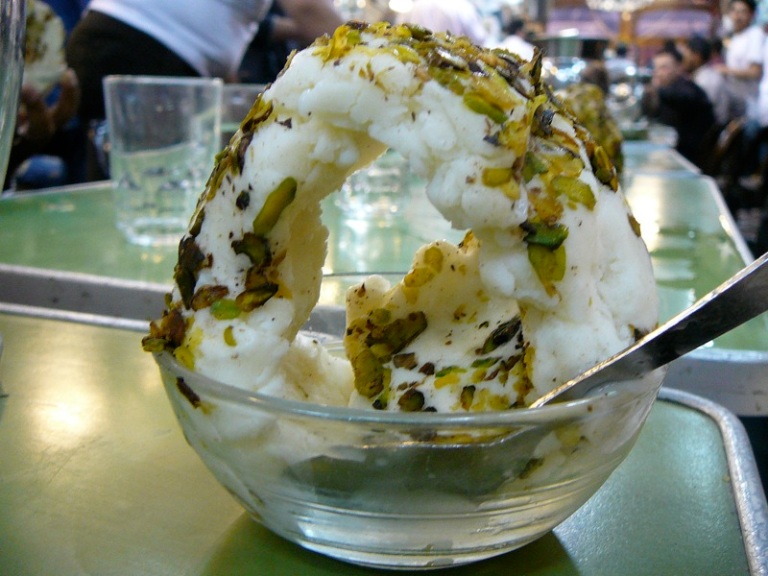
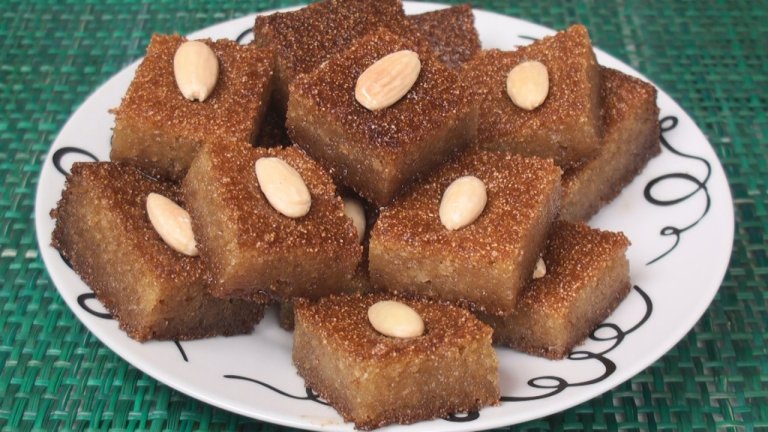

Arabic ice cream is known as Booza (البوظة العربية), which I think originated in Syria, and is much harder in texture than western-style ice cream as to remain resistant to the intense heat of the region. Basbousa (بسبوسة ) is a fantastic dessert cake that originates from Somalia and has now found its way all over the Arab World, where it is extremely popular in Egypt in particular. It is made of semolina and soaked in syrup. Mehalabiya is a traditional Arabic milk pudding, that originated in Egypt, but is not eaten everywhere in the region. Lots of rose water is required to make the taste of this dessert, not to mention plenty of full cream milk, and it is a firm family favourite.

And when the desserts and ice cream are finished, settle back and relax in true tradition, with a nice cup of Gahwa (traditional Arabic coffee) and a few Arabic Dates! Then watch that Arabian sunset go down with a shisha pipe!


Great informative article. Food is my passion when I travel. It is some times hard to find info on local cuisine of a place. I really appreciate this article.
LikeLike
Thanks. I am not an expert on Arabic cuisine but I am interested in it certainly, it’s a cuisine that’s on the rise!
LikeLike
I nearly droooooooled reading this! Makes me want to hop the first plane back to the UAE or Jordan or Palestine and just EATTTTTT!
LikeLike
Thanks for commenting. Arabic food is certainly getting more popular, but still hard to find good food locally near me. Have you see the food of Thailand, Korea, or India in my blogs too? Some of that stuff is mouthwatering too. Especially the Korean stuff. 😉
LikeLike
I have tried the shawarma, chicken and lamb khabsa and the fatayer, known in my place as samosa. Or are they 2 different food? Haha
Arabic food always make me full because of the big portion. ;D
LikeLike
I think Fayater and Samosa are different, although I guess they do have the same fillings…
LikeLike
Oh thanks for the input mate! 🙂
LikeLike
I also love the arabic kitchen and cook a lot from there as I been traveling a lot and lived in this area 🙂
LikeLike
Is there any major dish that I have missed out and should include in my post?
LikeLike
All depends of the area but Khosari you will find everywhere, a really street food 🙂
LikeLike
These are totally mouth watering… but believe me, its really hard to find a really good and tasty restaurant, at least here in Malaysia, locally eventhough there are numerous arabic restaurant sprouting like mushroom… I used to study at an Islamic uni and almost 30% of the students were arabs… it’s those nutty sweet dessert (of which ive forgotten what its called) and the savoury and juicy chicken that always bring me back for more…
LikeLike
Thanks for dropping by. I agree with you, good Arabic food is very hard to find in London also.
LikeLike
Very good shots and very good descriptions. Arabic food is certainly one of the most remarkable dishes in the world!
LikeLike
I have always loved Arabian delicacies, in Kerala (India) we do have a variant called Malabar Cuisine. Similar in many ways to Arabian cuisine.
LikeLike